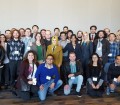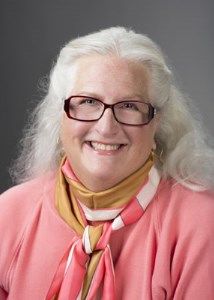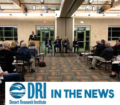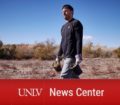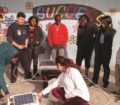By Jane Palmer
March 2016
Dr. Jacque Ewing-Taylor, the education workforce component lead for the Nexus project, leads the team who develops a sustainable science, technology, engineering, and mathematics (STEM) workforce. Their objective is to create a pipeline of STEM-trained students, educators and workers, while increasing public understanding of solar energy, water, and the environment.
Can you tell me a little about one of the programs that you’ve helped initiate?
The teacher professional development piece of my work is called NERDS, which is an acronym for Nevada Educators Really Doing Solar. It is focused on bringing mostly middle school teachers to campus for a period of time in the spring and the fall and then taking them into the field in the summer to build up their content knowledge as it relates to solar energy. And then we have them create lesson plans aligned with the Nevada Academic Content Standards, teach those lesson plans, revise them if need be, and then put them in a common format so that they can be posted on the web for all teachers to use, whether they’re in Nevada or not. So they’re learning the content of the Nexus project within the context of their classrooms. To the extent that we have been able to, we use faculty who are doing research on Nexus project pieces to come work with the teachers on the content piece, and then we bring in master teachers to work with them on the pedagogy pieces.
Why is this work so important?
When you look at the number of students that a single teacher can impact over the course of a few years, it’s critically important. When you train students, you train a class and if you’re at the university, you know, that can range anywhere from several hundred to four or five, depending upon the content piece. When you’re a Nevada high school teacher, you’re looking at 30 to 40 students seven or eight times a day, so you’re reaching hundreds of students a day. So if you can get to them with the content that you want to try to push out, it’s much more effective to work with the teachers and to get them up to speed on the content, help them incorporate it in a sound pedagogical way, into their classrooms and then impact the students.
How does this impact workforce development?
From a workforce development point of view, we also hope and believe we do effect in a positive way students’ perceptions of science and their interest in any of the STEM careers. It’s part of a pipeline that we attempt to build.
What projects do you have that involve high school students?
With the STEM Career Investigation Program, or SCIP, we bring upwards of 40 students a year to campus one night a week, it was Tuesday this year, for six weeks where they get to listen to and interact with scientists. And they’re not just University of Nevada, Reno scientists. So for example, one of the people we had this year was Andy Stevenson from Tesla. He came and talked to the students about his career, what kind of academic preparation he needed to get where he is, what he does, what Tesla’s doing. Everybody is, of course, excited about what Tesla’s doing and where Tesla hopes to go in the next five, ten years. That was a great opportunity for the students.
So going forward, what do you hope to achieve, with this work?
Two things: One, a sustainable pipeline from the K-12 system, whether it’s teachers or students, through the university, into the workforce, whether the workforce is a university workforce or whether it’s out at the Tesla Gigafactory.
And the other thing is to impact the workforce in Nevada. I’d like to be able to look at this and say we not only built a pipeline, but we changed the workforce in some way.
What do you find exciting about this work?
For the SCIP piece, it’s the kids. It’s the questions that they ask and the interest that they show. They come up with some good questions—that’s just exciting to see.
Then I love working with teachers. When you get them in a professional development situation where they’re learning and they’re experiencing a lot of what their students experience when they’ve got a new concept: that dissonance, that uncomfortableness, that “I don’t like not knowing all of this stuff.” And then, at some point, you see the light bulb go on. It’s just phenomenal. And then when you watch them bring it into the classroom, it’s just a wonderful thing.

